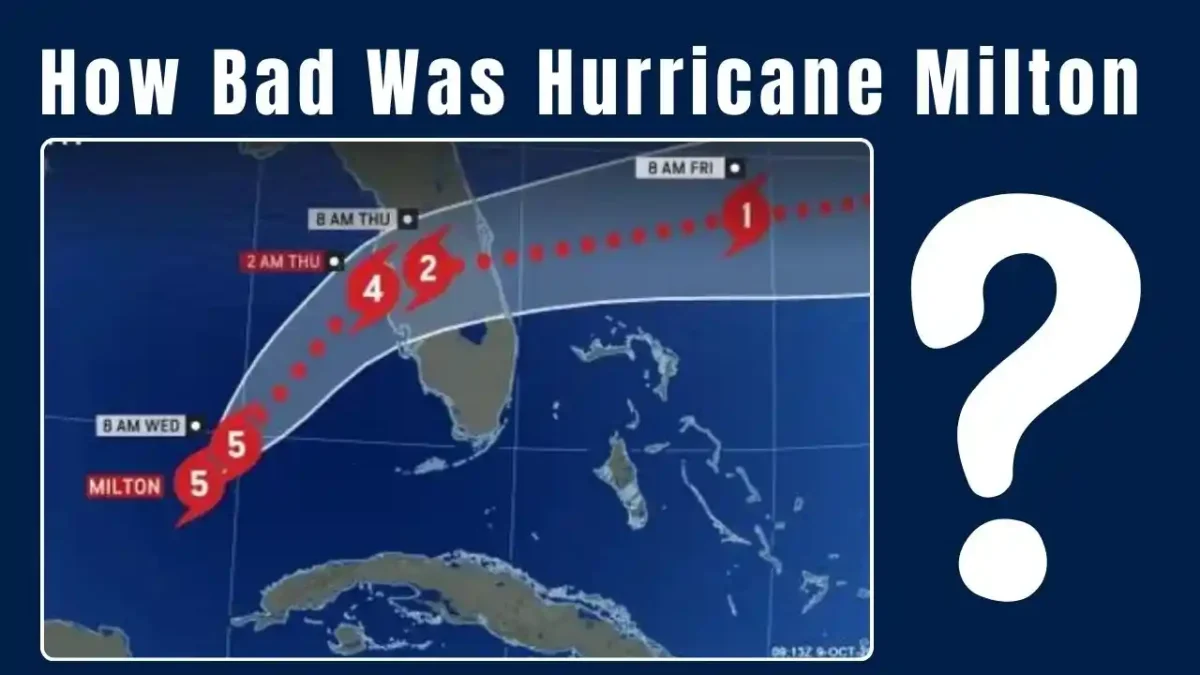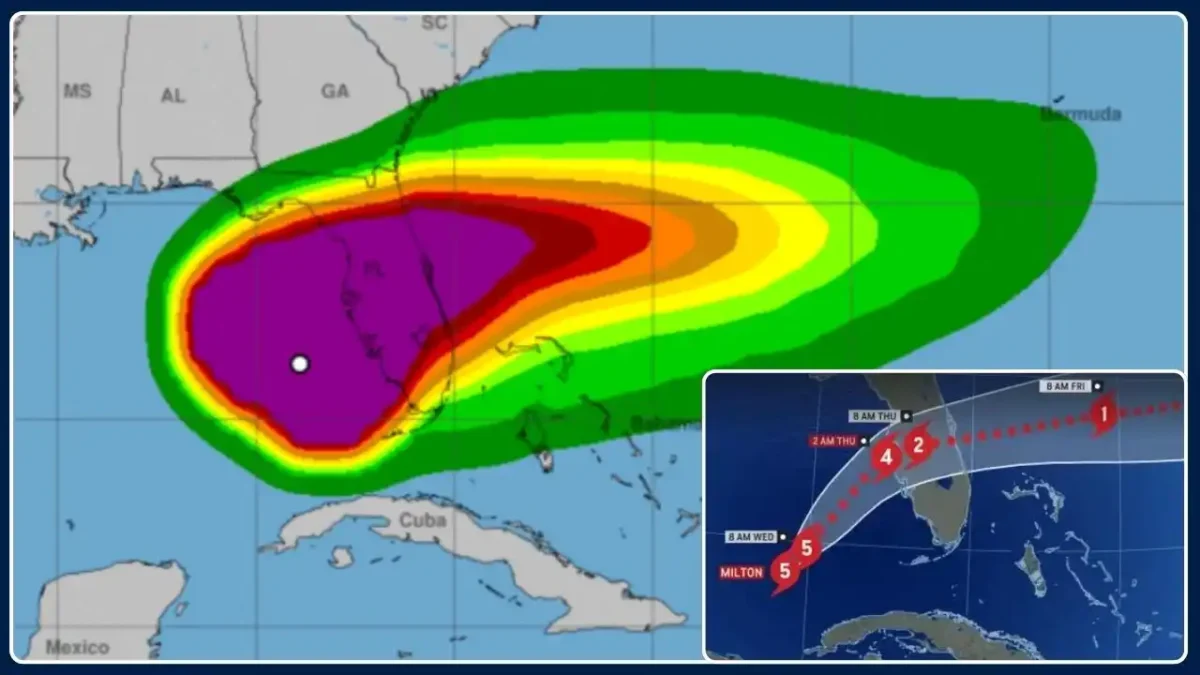How bad was Hurricane Milton? The storm caused significant damage across Florida, with high winds, flooding, and tornadoes impacting communities.
Table of Contents
Hurricane Milton made headlines as one of the most powerful storms to hit Florida in recent years. With sustained winds reaching up to 180 mph, it rapidly intensified into a Category 5 hurricane before making landfall. This report examines the storm’s severity and its aftermath.
The Path of Destruction
Hurricane Milton formed in the Gulf of Mexico and quickly gained strength. It transitioned from a tropical storm to a Category 5 hurricane in less than 24 hours. This rapid intensification caught many off guard, as the storm’s wind speed escalated dramatically from 80 mph to 175 mph within a short period.
As Hurricane Milton approached Florida’s west coast, it posed a significant threat to coastal cities such as Tampa, Fort Myers, and Sarasota. The storm made landfall near Sarasota on October 10, 2024, as a Category 3 hurricane but still brought devastating winds and heavy rainfall.
Impact on Infrastructure
The hurricane’s impact on infrastructure was severe. High winds and flooding caused extensive damage to power lines and buildings. Utilities across Florida braced for widespread power outages. Reports indicated that some areas experienced prolonged blackouts due to downed lines and damaged substations.
Additionally, the storm disrupted energy supplies. Ports in Florida were closed, halting inbound and outbound vessel traffic. This closure affected the transport of petroleum products critical for the state’s energy needs.
Tornadoes and Flooding
Even before making landfall, Hurricane Milton generated tornadoes that wreaked havoc across parts of Florida. These tornadoes added to the destruction, causing injuries and fatalities in areas far from the storm’s center.
Flooding was another major concern. Heavy rainfall led to flash floods in low-lying areas. Many residents were forced to evacuate as rivers overflowed their banks, inundating homes and businesses.
Economic Consequences
The economic fallout from Hurricane Milton is expected to be substantial. Initial estimates suggest insured losses could reach up to $20 billion, significantly impacting Florida’s property insurance market. Insurers specializing in Florida properties may struggle to absorb these losses, leading to increased premiums and reduced coverage options for homeowners.
The storm’s aftermath could stall any progress made by insurers in stabilizing the market after previous hurricanes like Helene. The ongoing debris from past storms may exacerbate damage during future events, creating a cycle of increasing risk for insurers and homeowners alike.
Climate Change Connection
Hurricane Milton’s rapid intensification raises questions about climate change’s role in hurricane behavior. Studies indicate that warmer ocean temperatures contribute to more frequent and severe storms. As global temperatures rise, the likelihood of hurricanes intensifying rapidly increases, posing greater threats to coastal communities.
Experts warn that this trend may continue as climate change progresses. The connection between rising sea temperatures and hurricane intensity is an area of active research, with implications for future storm preparedness and response strategies.
Conclusion
In summary, Hurricane Milton was a catastrophic event for Florida. Its rapid intensification led to severe wind damage, flooding, and tornadoes that affected thousands of residents. The economic ramifications will likely be felt for years as insurers navigate the aftermath.
As communities begin recovery efforts, the focus will shift toward rebuilding and preparing for future storms amid changing climate conditions. Understanding how bad Hurricane Milton was is crucial for improving resilience against such devastating natural disasters in the future.
Discover more from Majhi Naukri | माझी नोकरी 2025
Subscribe to get the latest posts sent to your email.




1 thought on “How Bad Was Hurricane Milton? Devastating Impact on Florida”